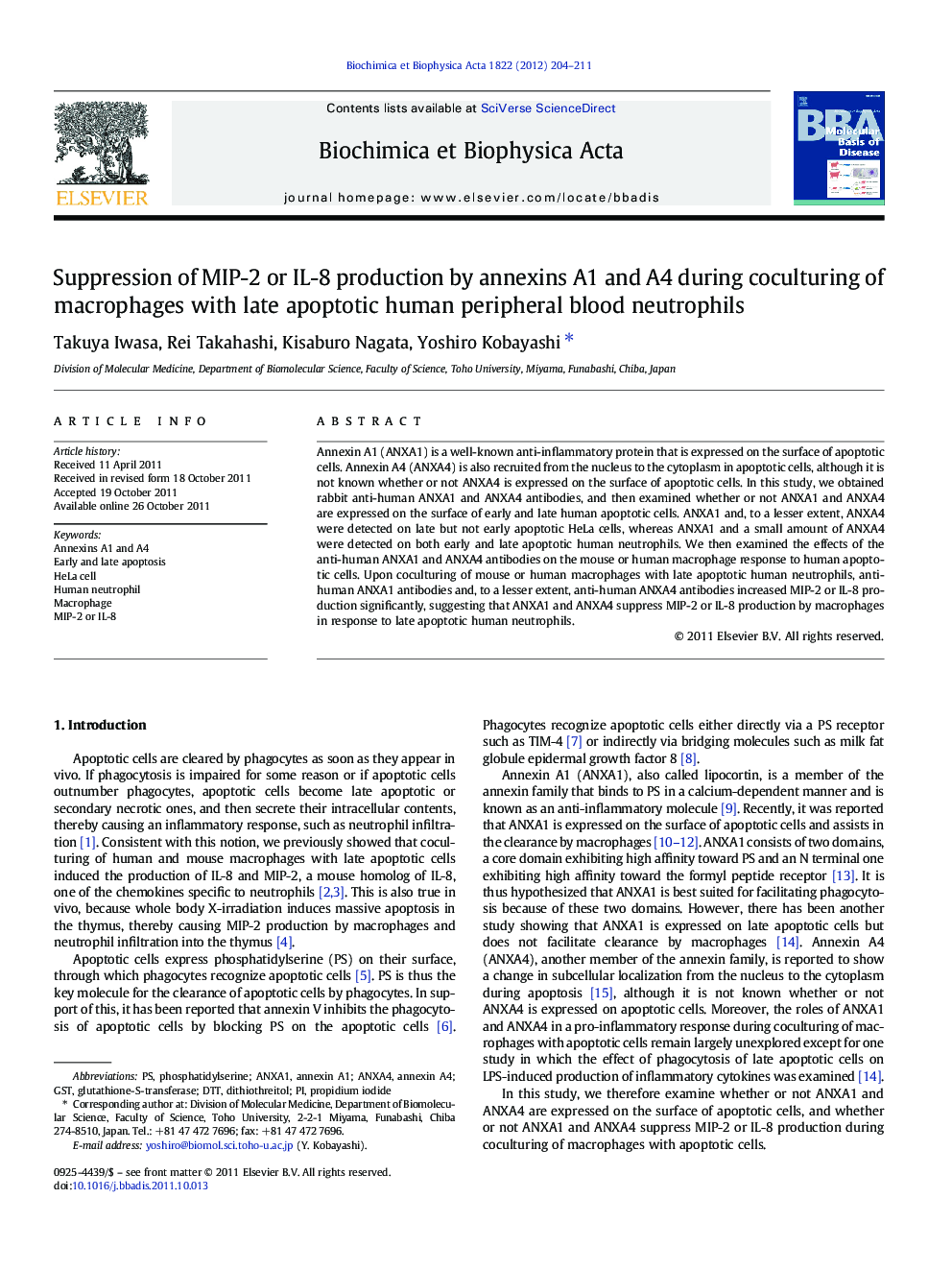| Article ID | Journal | Published Year | Pages | File Type |
|---|---|---|---|---|
| 1905025 | Biochimica et Biophysica Acta (BBA) - Molecular Basis of Disease | 2012 | 8 Pages |
Annexin A1 (ANXA1) is a well-known anti-inflammatory protein that is expressed on the surface of apoptotic cells. Annexin A4 (ANXA4) is also recruited from the nucleus to the cytoplasm in apoptotic cells, although it is not known whether or not ANXA4 is expressed on the surface of apoptotic cells. In this study, we obtained rabbit anti-human ANXA1 and ANXA4 antibodies, and then examined whether or not ANXA1 and ANXA4 are expressed on the surface of early and late human apoptotic cells. ANXA1 and, to a lesser extent, ANXA4 were detected on late but not early apoptotic HeLa cells, whereas ANXA1 and a small amount of ANXA4 were detected on both early and late apoptotic human neutrophils. We then examined the effects of the anti-human ANXA1 and ANXA4 antibodies on the mouse or human macrophage response to human apoptotic cells. Upon coculturing of mouse or human macrophages with late apoptotic human neutrophils, anti-human ANXA1 antibodies and, to a lesser extent, anti-human ANXA4 antibodies increased MIP-2 or IL-8 production significantly, suggesting that ANXA1 and ANXA4 suppress MIP-2 or IL-8 production by macrophages in response to late apoptotic human neutrophils.
► Annexins A1 and A4 were detected on late early apoptotic HeLa cells and both early and late apoptotic human neutrophils. ► Mouse macrophages produced MIP-2 in response to late apoptotic human neutrophils, but not HeLa cells. ► Annexins A1 and A4 suppress MIP-2 or IL-8 production during coculturing of mouse macrophages with late apoptotic human neutrophils.
